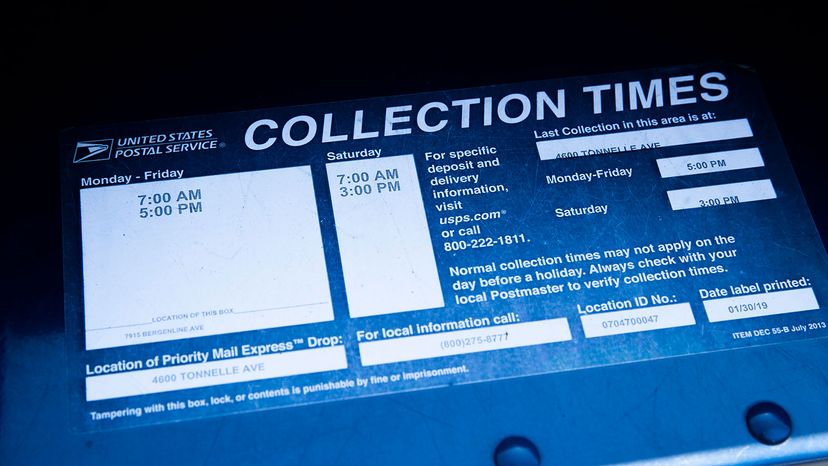Delivery Services

The USPS offers several levels of service. You choose the service based on how quickly you want the letter or package delivered and how much you're willing to pay. The terminology is sometimes confusing, so we've broken it down below. (Note that there are many additional options within each of these categories, and business mail has even more choices.)
Priority Mail Express service offers quick delivery for letters, large or thick envelopes, tubes and packages. It includes insurance up to $100 and guarantees overnight or two-day delivery. You can also purchase additional insurance up to $5,000.
Advertisement
Priority Mail service offers one- to three-day service to most domestic destinations.
Both Priority Mail Express and Priority Mail have a weight limit of 70 pounds and a maximum length of 108 inches.
First-Class Mail service doesn't guarantee delivery within a specific period, although the typical delivery time is one to three days. It is most often used for personal and business correspondence and bills, but you can also send packages weighing up to 13 ounces and envelopes up to 3.5 ounces.
USPS Retail Ground service is listed as a "reliable and economical" option for mailing both large and small packages. Retail Ground rates are based on weight, mailing distance and shape. Packages are typically delivered within two to eight business days — they can weigh up to 70 pounds and measure up to 130 inches in combined length and distance around the thickest part. (As of 2016, Parcel Post is called Parcel Select Ground.)
Media Mail can be the least expensive way to mail packages and thick envelopes. Contents are limited to books, manuscripts, sound recordings, recorded videotapes and computer-readable media (not blank). Packages are usually delivered within two to eight business days. As prices are by weight only and not distance as well, it is often cheaper to ship this way rather than through retail ground. Media Mail cannot contain advertising, except for incidental announcements in books.
In 2001, the first phase of a business alliance between the USPS and FedEx Express began with the installment of FedEx drop boxes at post office facilities. With those installments, FedEx agreed to pay the USPS between $126 million and $232 million in fees over the next seven years. In the second part of the agreement, the Postal Service began paying FedEx approximately $6.3 billion over seven years for shared access to the FedEx Express national air transportation network. FedEx transports Priority Mail Express, Priority Mail, first-class mail and a portion of some international mail. This enabled the USPS to improve its service without increasing its costs.
The USPS made a similar agreement with UPS in 2003 that was expanded in 2006. UPS began transporting first-class and Priority Mail between 98 U.S. cities. UPS often delivers USPS mail to more distant outposts, and the USPS has delivered UPS packages to rural areas.
In 2020, new postmaster general Louis DeJoy is looking to slash costs for the USPS. One target he's eyeing is the USPS' air lift contract with FedEx; the USPS paid FedEx more than $2 billion in fiscal year 2019 for air services. If DeJoy finds a less-pricy competitor service to take over, that will have major ramifications on FedEx, as the USPS is its largest customer [source: Garland].